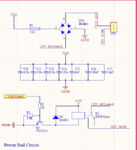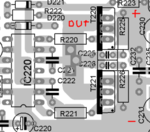rho-bot
Advanced Member level 4
Hi Hadi,
good to hear basic functionality is now given.
Time to enter stage 2 (Hi-voltage operation) ;-)
I suggest to read the following AN, to get aware of MOSFET issues, which may occur:
https://toshiba.semicon-storage.com/info/docget.jsp?did=59464
good to hear basic functionality is now given.
Time to enter stage 2 (Hi-voltage operation) ;-)
I suggest to read the following AN, to get aware of MOSFET issues, which may occur:
https://toshiba.semicon-storage.com/info/docget.jsp?did=59464



